SUMMARY
This is AI generated summarization, which may have errors. For context, always refer to the full article.
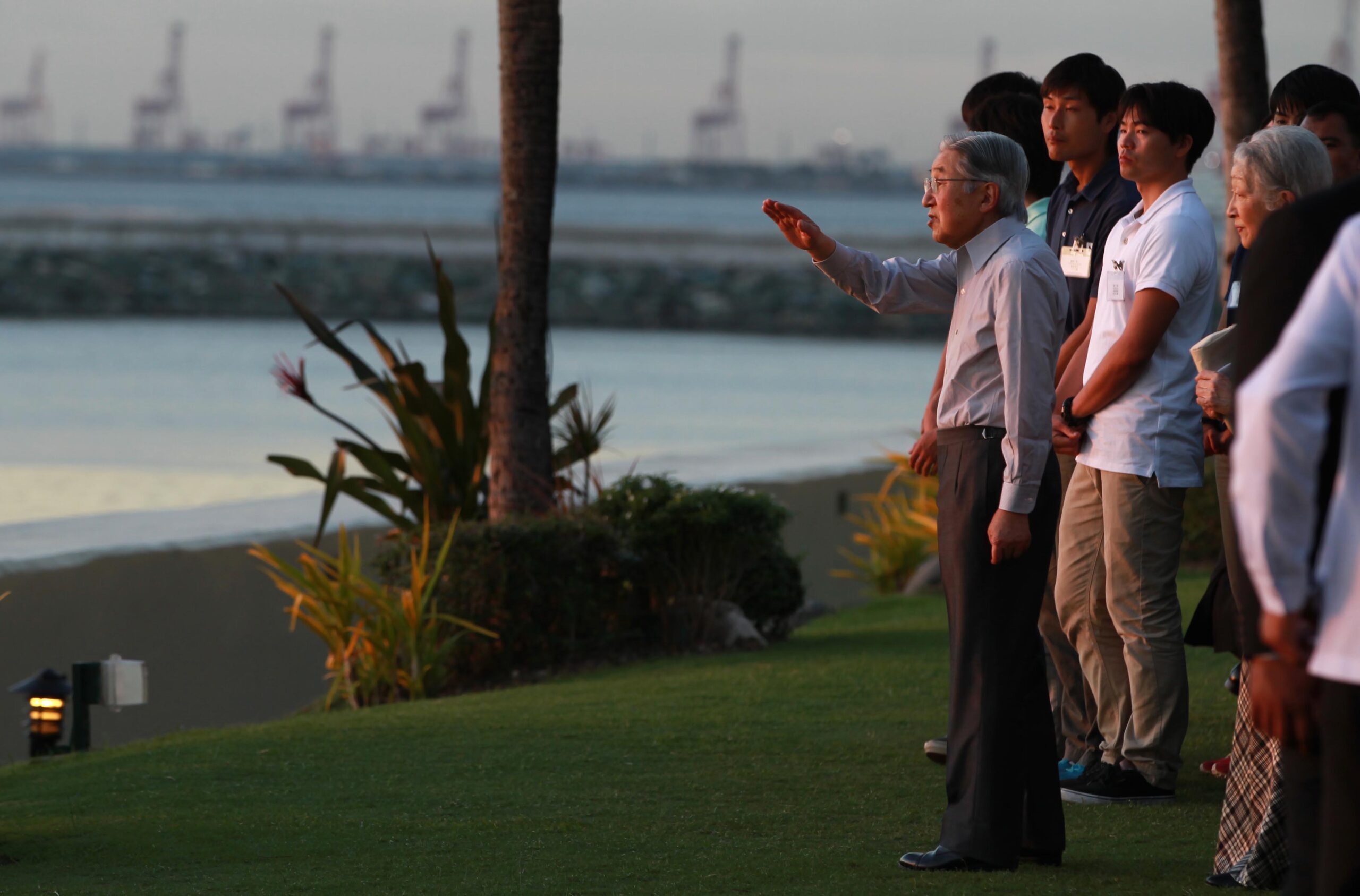
The night Emperor Akihito and Empress Michiko settled at the Sofitel upon arriving in the Philippines, a small group of Manila journalists and I talked over dinner in the same hotel with the imperial couple’s spokesman for the trip.
“Manila’s beautiful sunset,” said Ambassador Hatsuhisa Takashima, was the “highlight” of their majesties’ first day in this country, which they first visited almost 54 years ago.
It was Tuesday, January 26. The next 4 days of their state visit would be, as the couple wished, “blessed by beautiful skies and the warm welcome from the people of the Philippines.”
It wasn’t purely diplomatic talk. If we go by the history of Philippine-Japan relations – specifically the darkest 3-year episode that was World War II – then we would know where the Emperor’s fixation with a warm welcome was coming from.
Emperor Akihito is the son of Emperor Hirohito, whose policy of extending Japan’s power through colonization was blamed for the destruction of other countries and their people.
At the time, Ambassador Takashima said, then Prince Akihito was a child and “didn’t go to the battlefield, but saw the hardships of wartime Japan.” He imagined that the countries that Japan occupied in his father’s name were just as ravaged. (READ: Emperor Akihito: Not in his father’s shadow)
In November 1962, he and his wife were sent here to represent his father. At the time, Japan didn’t have a law yet that would allow government officials to represent the emperor in diplomatic visits, so it had to be the son.
Prince Akihito (then 29 years old) and Princess Michiko were “nervous.” Although the relations between Manila and Tokyo had normalized 6 years before that, they felt that the “anti-Japanese sentiment was [still] high.” They expected a cold treatment. They expected people hurling negative slogans at them.
“To their surprise – and they were deeply honored – your president and his wife were at the airport to welcome them,” the ambassador said, referring to then president Diosdado Macapagal and his wife Eva. “That melted the tension and unease in the hearts of the young prince and princess.”
Now, Akihito, 82, is referred to as an emperor of peace. On occasions that he spoke about the war, his message had always been one of remorse. About the Philippines, specifically, his message to his people is always: be grateful for the forgiveness, but don’t forget what pain we inflicted on them.
“Although the Filipino people have forgiven the Japanese for the atrocities, the emperor says, don’t forget,” Ambassador Takashima said. “The Emperor and the Empress were talking between themselves, and they said the Filipinos are Christians so they were able to forgive.”
But enough of the love fest of old. We have already read in the news about the official stuff, like how Japan is our biggest partner on 3 fronts: trade, investment, and official development assistance. Besides, strategic partnerships and policies toward allies like the Philippines (military assistance and sex slaves, as examples) are decided by the politicians in Tokyo, not by the monarchs. (READ: FAST FACTS: PH-Japan relations through good and bad times)
This was a visit of goodwill. It’s probably fitting to wrap it up (they flew back to Tokyo on Saturday, January 30) by sharing – diary style – little-known facts about the Emperor and Empress during this visit.
Tuesday, January 26
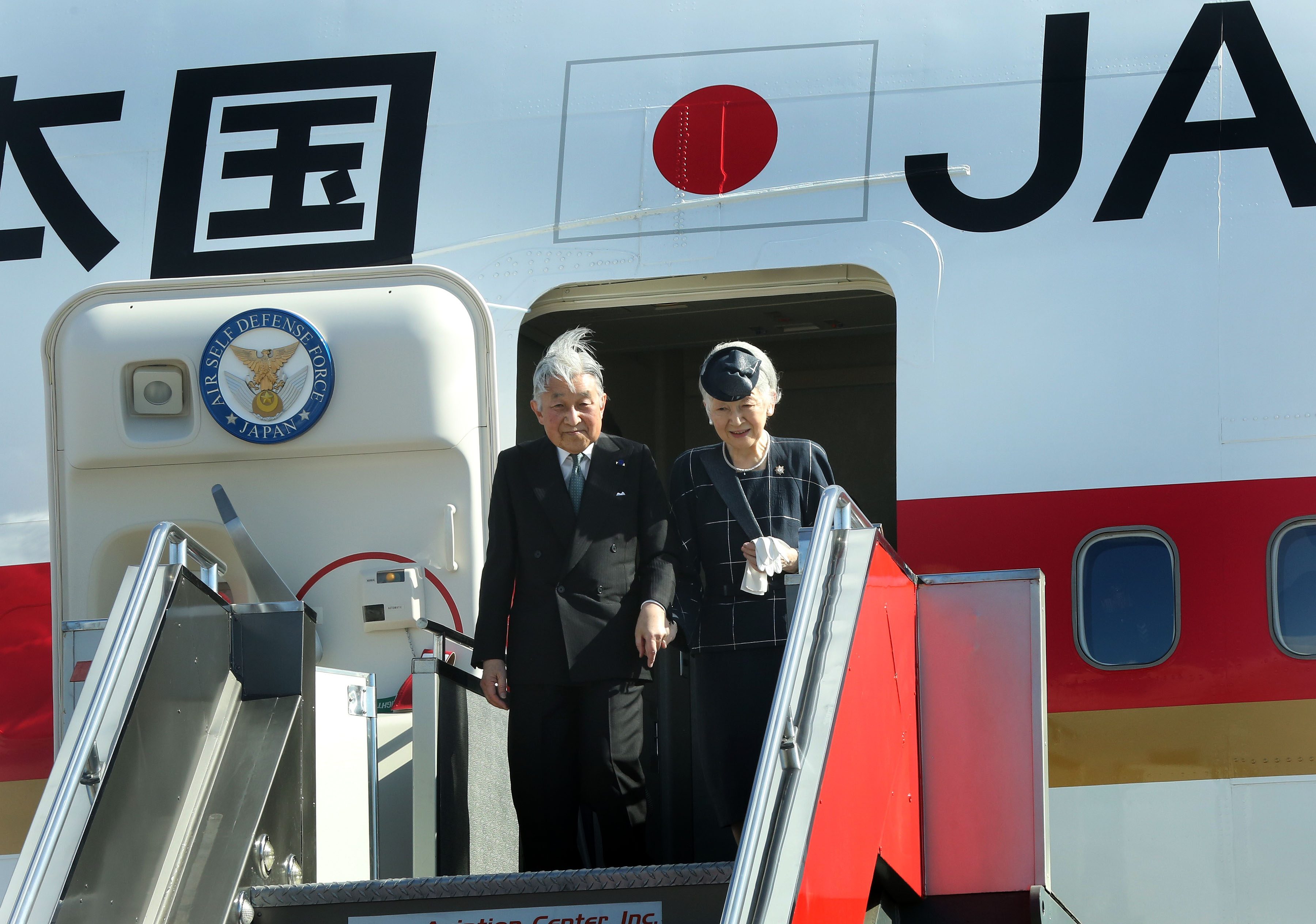
The Emperor and Empress arrived at the Ninoy Aquino International Airport in the afternoon aboard a Boeing B747-400 of the Japan air force. They were on Flight JF001, while their entourage was on Flight JF002. The airport runway was closed an hour before their landing – SOP when dignitaries arrive.
President Benigno Aquino III, with his sister, welcomed the imperial couple at the airport. This is not just protocol or courtesy on the part of the President. The Emperor and Empress came because they were “touched” that Aquino invited them to come to the Philippines when he went on a state visit to Japan.
Note how quickly the trip was arranged: Aquino extended the invitation in June 2015, and their majesties were here in 7 months. In comparison, Prince and Princess Akihito’s visit in 1962 came 4 years after President Carlos Garcia’s state visit to Japan in December 1958.
Between the imperial couple’s visit in 1962 and now, there were 5 instances that leaders of the two countries visited:
- November 1986 – President Corazon Aquino went on a state visit to Japan
- February 1998 – Prince and Princess Akishino visited the Philippines
- September 2011 – President Benigno Aquino III was on an official working visit to Japan
- July 2013 – Prime Minister Shinzo Abe’s state visit to the Philippines
- June 2015 – President Aquino’s state visit to Japan
Note that since Cory Aquino, no other Philippine president had gone to Japan – until her son Benigno III. A fondness for Japan must run in this family. If accounts by my sources are correct, some Japanese nationals even helped the family when Senator Benigno Aquino Jr – Cory’s husband; Benigno III’s father – was being persecuted for fighting the dictatorial government of Ferdinand Marcos. They were different from those known by the senator’s brother-in-law, former journalist Ken Kashiwahara.
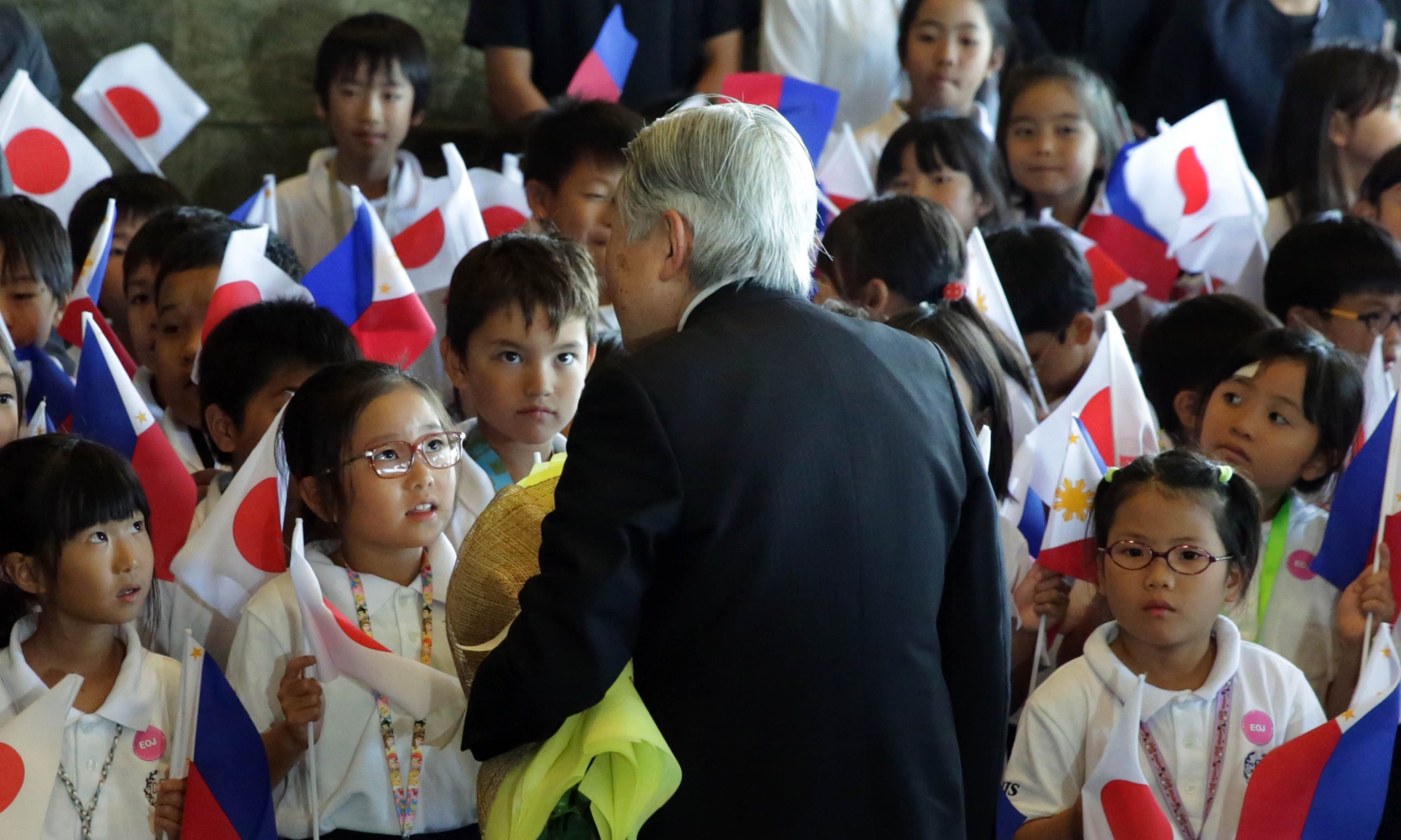
Their only activity on Tuesday was a meet-up with the Japan Overseas Cooperation Volunteers (JOCV). There are 48 young men and women currently doing development work in parts of Luzon and the Visayas. The program allows them to stay in communities for two years to help them in agriculture, automobile mechanics, and civil service.
Their majesties were encouraged by “the enthusiasm of our young people here,” the ambassador said, especially when these youth expressed their wish to stay longer than two years to see the impact of their work on their host communities.
Turning 50 this year, the JOCV program is administered by the Japan International Cooperation Agency (JICA), one of the world’s largest bilateral aid agencies. Read the story of the first Japanese volunteer in the Philippines who came to Benguet in the 1950s.
Wednesday, January 27
The day of the Emperor and the Empress basically revolved around President Aquino. A welcome ceremony was held for them in Malacañang in the morning, and a state dinner in the evening.
During the 20-minute meeting between the President and Emperor Akihito, they talked about 3 things, according to Palace Communications Secretary Sonny Coloma:
- The Emperor’s previous visit to the Philippines, when he went outside Manila – to Tagaytay and Baguio
- Heavier traffic volume in Metro Manila due to increased automobile sales – and these are mostly Japanese cars
- The Japanese fashion retailer Uniqlo and its Heattech technology
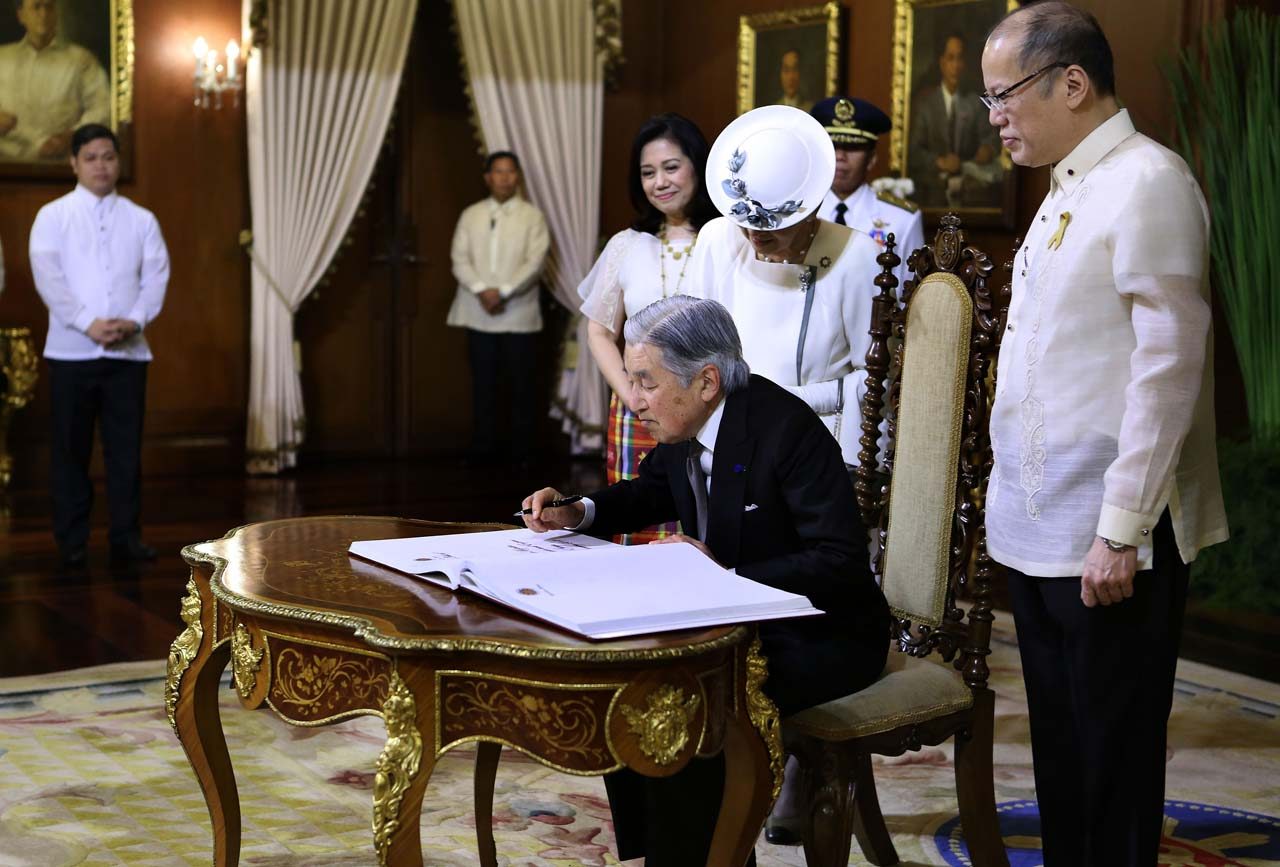
As reported before, the Japanese government is helping the Philippines with feasibility studies and loans to ease traffic not just in Metro Manila but in other key cities too. It was JICA that said that if we don’t fix the national capital region’s traffic, our economic losses would amount to P6 billion a day by 2030. The Japanese aid agency has prepared a traffic roadmap for Metro Manila, as well as an urban plan for Metro Cebu.
As for Uniqlo, branches of the quality but affordable fashion line have sprouted in the Philippines since it partnered with the SM group here in 2012. During President Aquino’s state visit to Japan in 2015, he met with Uniqlo CEO Tadashi Yanai, hoping to convince him to set up manufacturing operations in the Philippines.
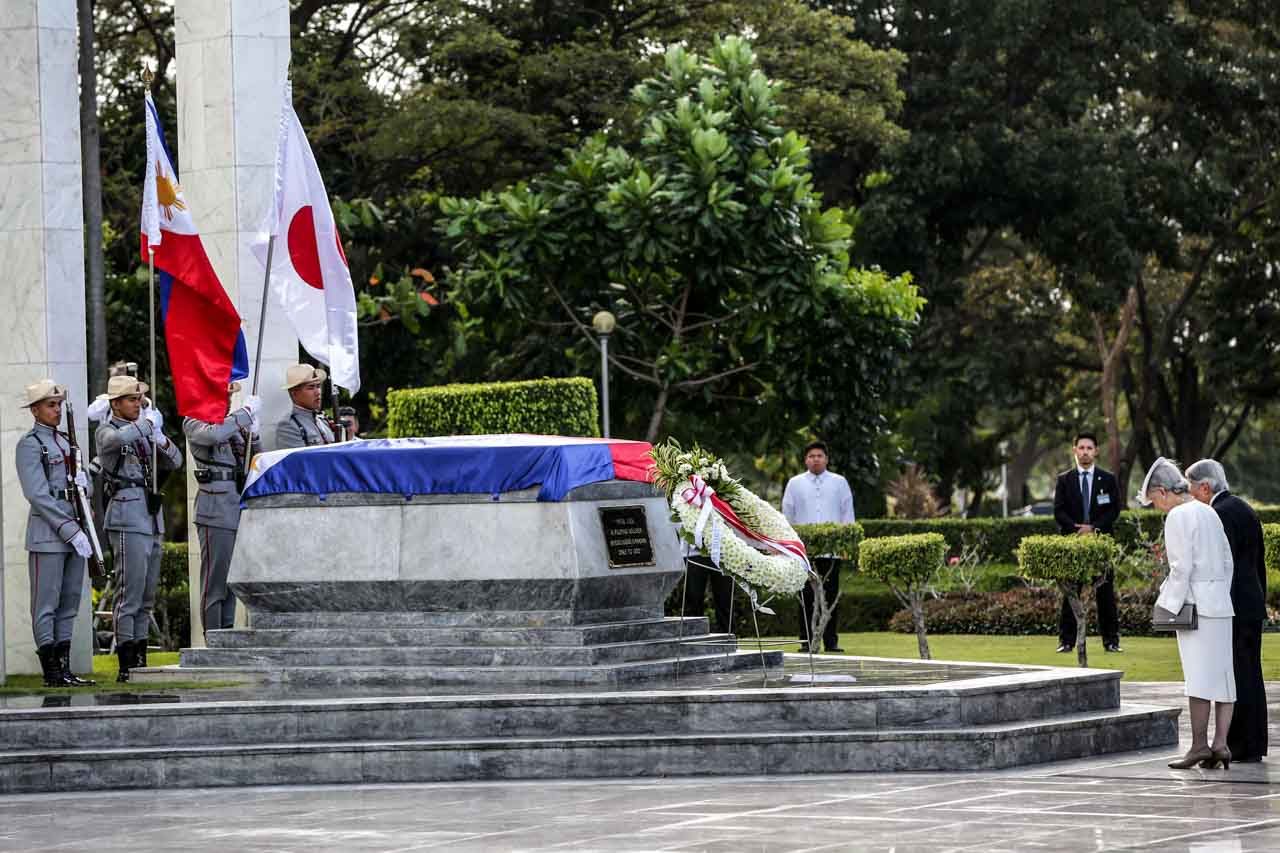
Between the two events in Malacañang on Wednesday, the Emperor and Empress offered a wreath at the Rizal Park. Coincidentally, Jose Rizal stayed in Japan – in Yokohama and Tokyo, specifically – for almost two months in 1888.
According to the site joserizal.ph, our national hero “studied the habits and customs of the Japanese people, their language, theaters, and commerce” while he was there, and wrote a friend back home “about the honesty, courtesy, cleanliness and industry of the Japanese people.” It said Rizal “envisioned that in the future the Philippines would have more contact and relations with Japan.”
In the afternoon of Wednesday, Emperor Akihito and Empress Michiko offered a wreath at the Libingan ng mga Bayani, and reiterated the message that Japan “must never forget the Filipinos who died during World War II.”
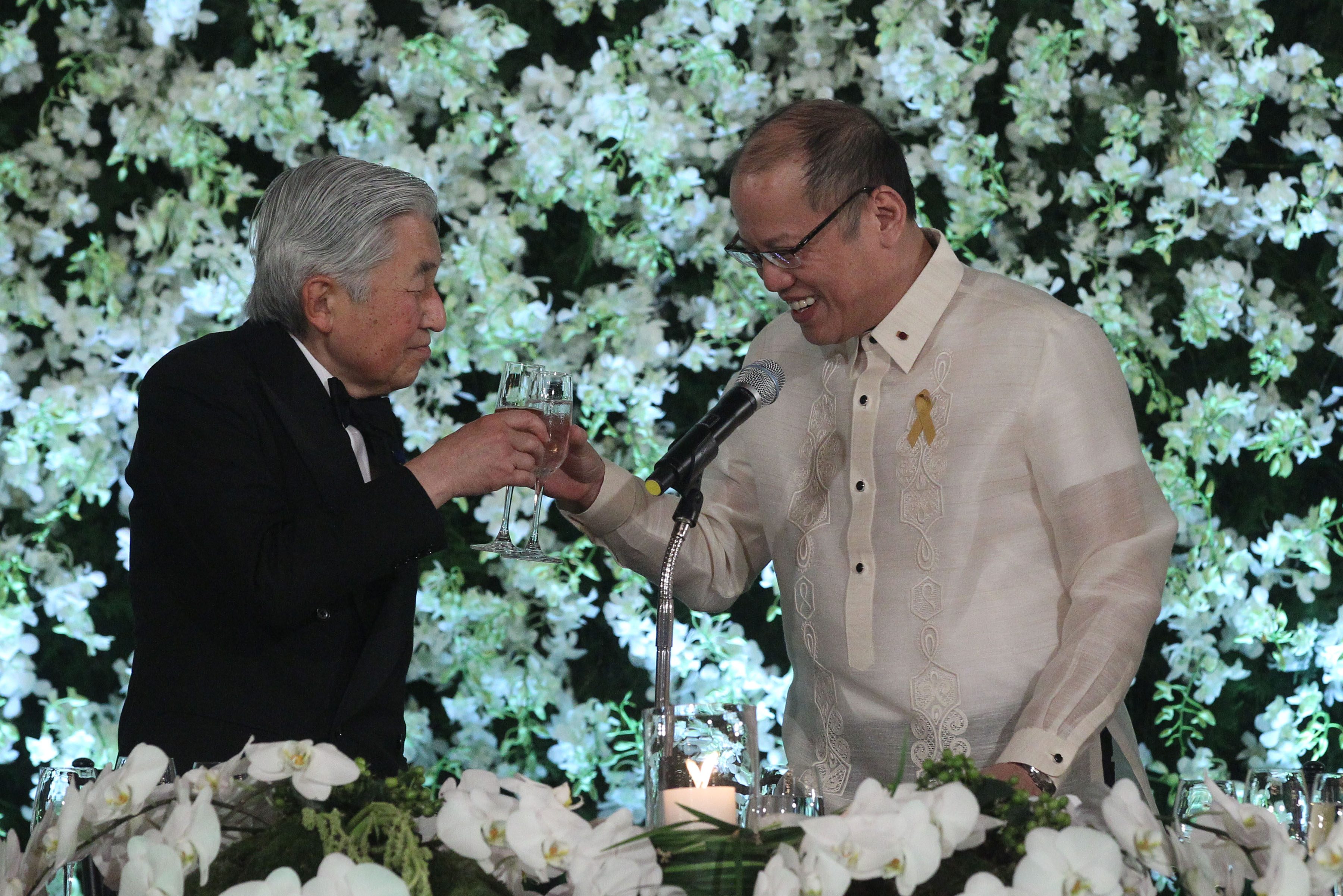
During the state dinner In the evening, Emperor Akihito spoke in Japanese, with an interpreter. He does speak English, however, said their spokesman. But because it was a formal, official affair, he spoke in his native language. (The English version of his speech was emailed to newsrooms immediately after.)
President Aquino, for his part, delivered his speech in English, but ended with “Domo arigato gozaimasu.”
Read on Rappler what President Aquino and Emperor Akihito said in their toasts during the state dinner.
Thursday, January 28
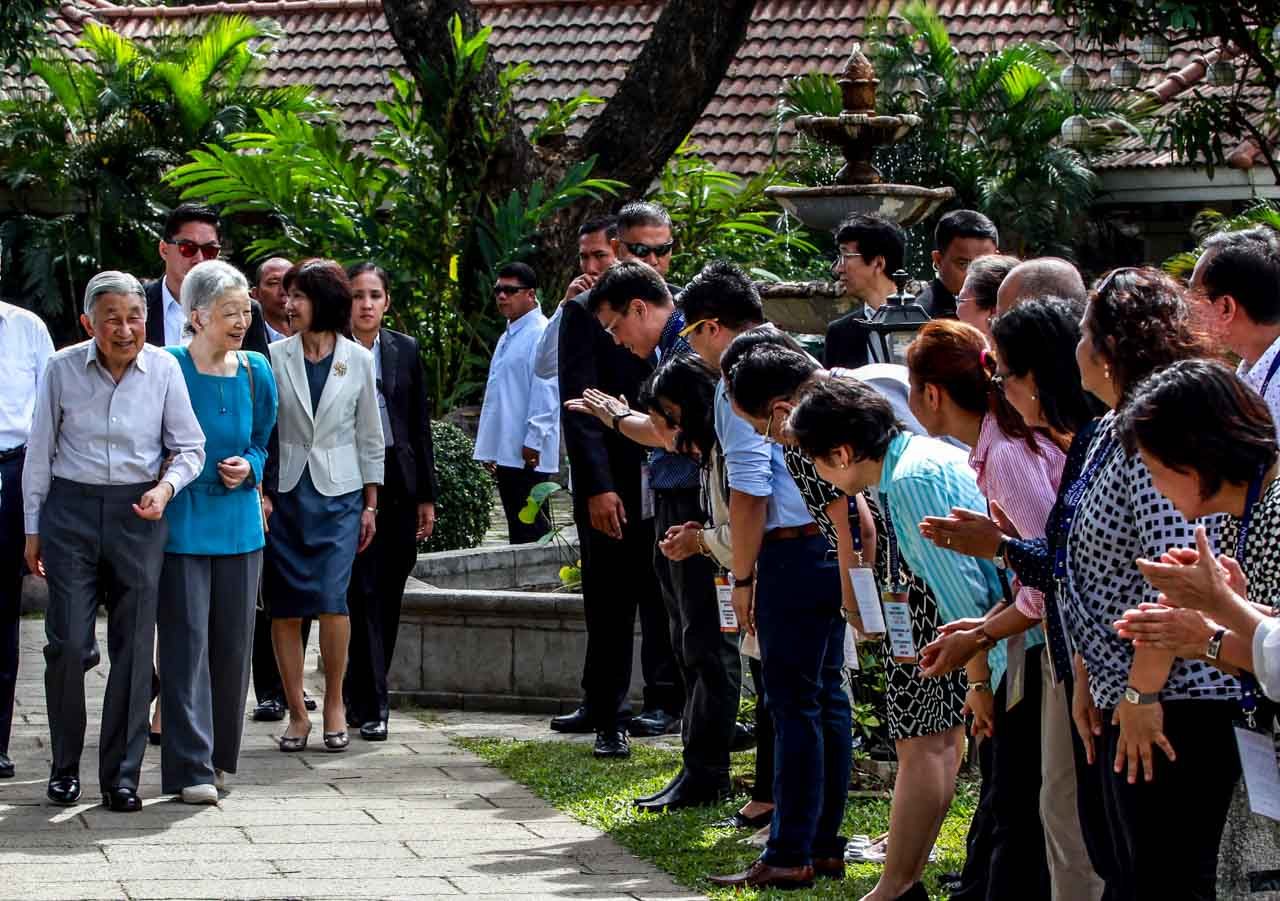
The imperial couple’s first meeting on Thursday was at the San Diego Gardens in Intramuros, Manila, with Filipinos who studied and trained in Japan. Their organization, called the Philippine Federation of Japan Alumni or PHILFEJA, has been active for 40 years, since it was founded by Ambassador Jose Laurel III. It has 8 member organizations so far.
On their way to the meeting, the Emperor was photographed with the window of his car rolled down, as he waved at cheering students along the walls of Intramuros.
This waving at a crowd was reminiscent of an episode during their 1962 visit. The imperial couple at the time visited former Philippine president Emilio Aguinaldo, who by that time, had lost his sight. During that visit to Kawit, Cavite, south of Manila, the then-prince and princess remember helping Aguinaldo reach the balcony of the famous mansion.
“There were about a hundred people outside, shouting at them, ‘Mabuhay!’ (Long live!) They were overwhelmed,” Takashima said.
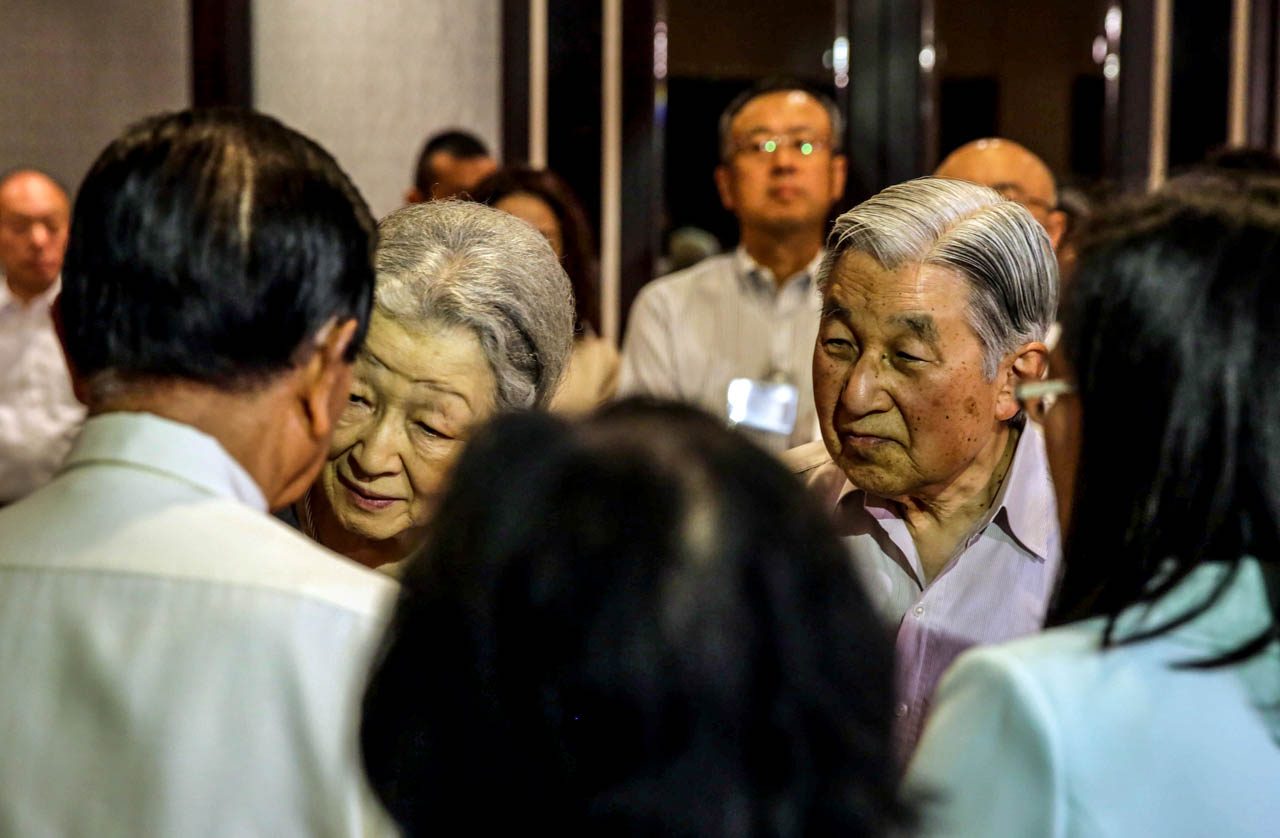
Back at Sofitel, their majesties met with Japanese residing in the Philippines, as well as Filipinos of Japanese descent, some of whom have never been to Japan. There are only about 19,000 Japanese nationals living in the Philippines, as opposed to some 200,000 Filipinos in Japan, according to the Japanese embassy.
Among those in the group was Carlos Teraoka, a Japino who served as honorary consul of the Japanese embassy – the only one in Asia to be named to such position. He was the same guy whom then-Prince Akihito met in Baguio City in 1962. (Read Rappler’s story of how the life of this Filipino Japanese from Baguio City fits Emperor Akihito’s forgive-but-don’t-forget message about the war.)
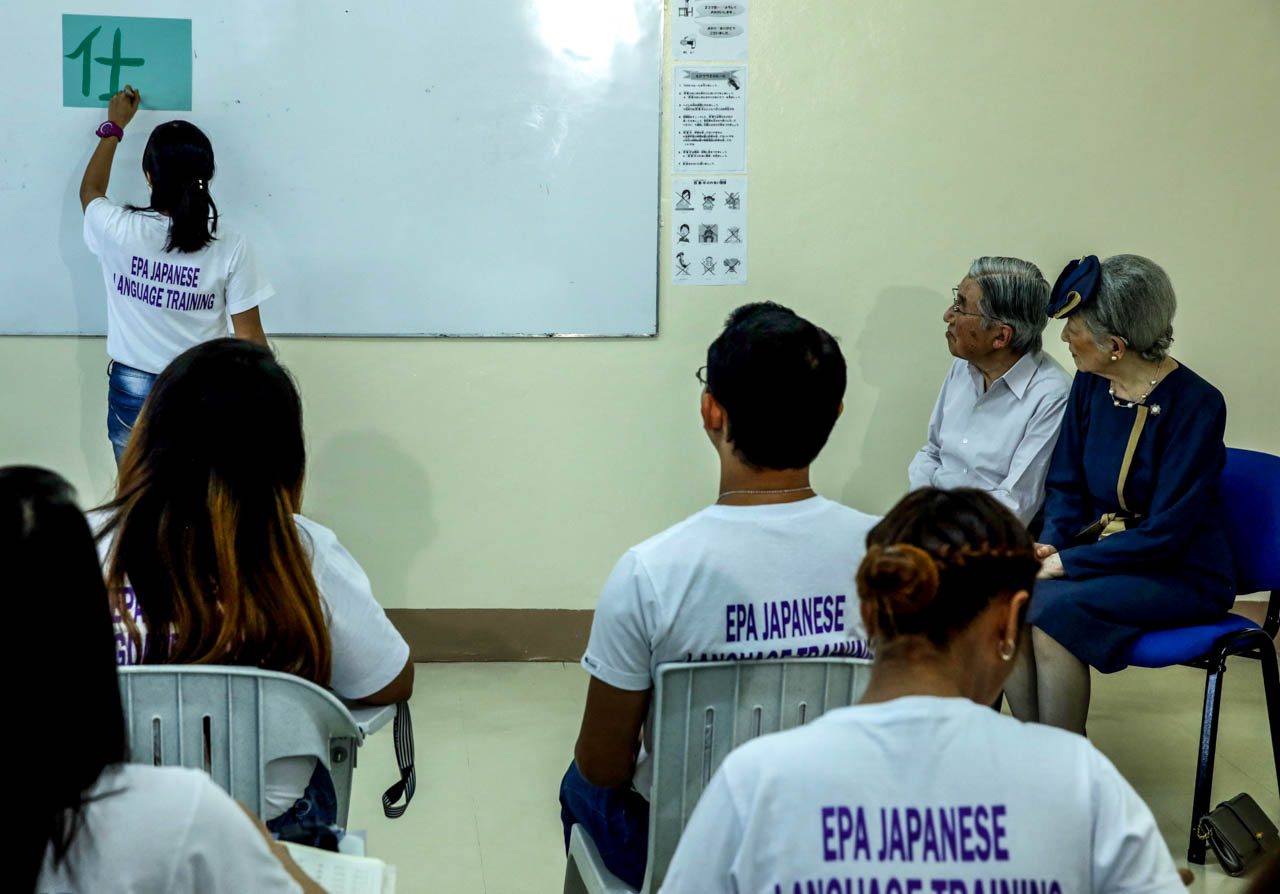
In the afternoon, the imperial couple visited the language training center of the Technical Education and Skills Development Authority. The language training program is part of the Japan-Philippines Economic Partnership Agreement.
The Emperor and Empress then graced the reception prepared by Japanese Ambassador to the Philippines Kazuhide Ishikawa at his residence in Forbes Park, Makati. President Aquino was again present. Here are photos of their activities on Thursday.
Friday, January 29
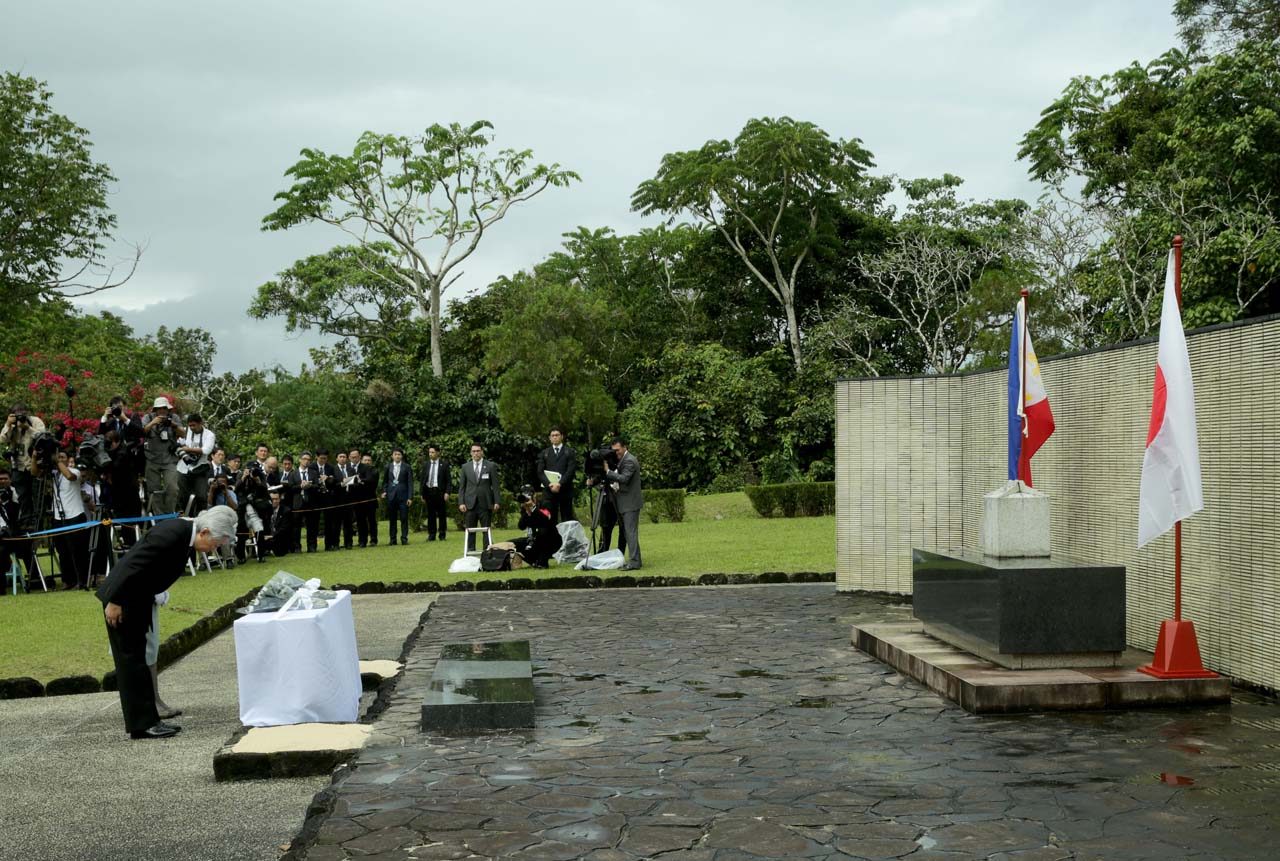
The Emperor and Empress spent Friday in Laguna. They were lifted by chopper, while their entourage travelled by land. Their most symbolic stop was at the Japanese Memorial Garden, in Caliraya town, where they offered flowers for both Japanese and Filipino soldiers who died in the war.
The royal couple couldn’t be grateful enough, Ambassador Takashima said. While there are a number of memorials for the casualties of war, they are mostly built by private organizations. The one in Caliraya was built by the government.
Until this dinner with the state visit spokesman, we only knew that about 100,000 Filipinos died during World War II. In fact, the largest number of Japanese who died during the war died in the Philippines, he said. There were 518,000 of them, and less than half of them are “still missing,” or their remains have yet to be identified.
The Japanese government acknowledges it would be difficult to trace the bones of those soldiers, since their troops moved a lot, but it deeply appreciates Philippine government efforts to resume excavation. (Takashima himself had an uncle who died in the Philippines, and his grandparents waited with futility for their son’s bones to be retrieved.)
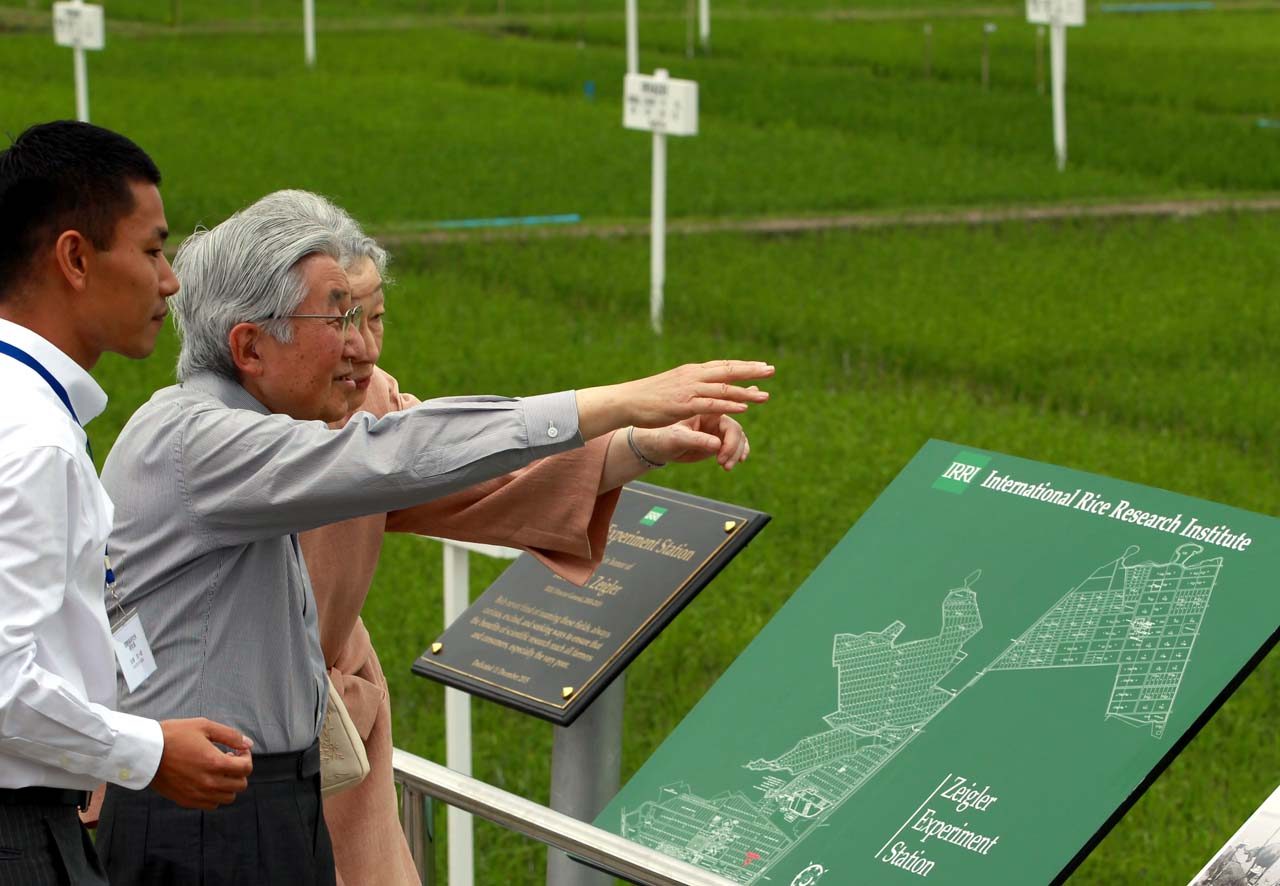
After the 30-minute prayer ceremony at the war memorial – which was televised live by the government-run NHK in Japan – the imperial couple proceeded to the International Rice Research Institute (IRRI) in Los Baños.
According to IRRI’s Bruce Tolentino, deputy director for communications and partnerships, “Their Majesties expressed special interest in IRRI’s work on climate-ready rice, particularly submergence-tolerant rice.”
He added, “They also seemed pleased about the long-term relationship IRRI has had with the Japan International Research Center for Agricultural Sciences (JIRCAS), and that the institute has always had a Japanese national on its board of trustees since its founding in 1960.”
Emperor Akihito was excited about the tour for more than these official reasons, Takashima said. Aside from the fact that his majesty “personally knows some of the scientists” that the institute has had, the Emperor himself does some farming. “He is very interested in [growing] rice.”
According to him, Emperor Akihito has a rice paddy, where he plants, grows, and harvests rice himself. He then prepares them for offering at one of the shrines in the imperial palace. “It is one of his most important rituals.”
Saturday, January 30
While to some observers it was an honor for the imperial couple to spend as many as 5 days in the Philippines, it seemed our state guests could wish for more time here. Empress Michiko was reportedly talking about wanting to see a Filipina classmate from the Seishin (or Sacred Heart) High School in Minato, Tokyo, where she graduated in the early 1950s.
“It’s not in the itinerary, but they were considering it,” Takashima said.
“They have very fond memories of your country,” he continued. “They remember the names and the stories of the people they met here during their first visit, and they have kept themselves updated on news about them.”
The Emperor is 82; the Empress, 81. Considering it took them 54 years to visit the Philippines a second time – and with government officials now doing the diplomatic work between the two countries – it may be long before somebody from the imperial family steps on Philippine soil again (although a friend of mine had the surprise of his life to bump into the Japanese prince jogging outside the imperial palace).
Certainly, however, the goodwill between the former warring countries has been strengthened further by this visit. “Friendly and future-oriented,” was how their spokesman put it. And he was visibly pleased (if surprised) when some of the journalists told him that many Filipinos simply found their majesties “so cute.”
Tell me if they’re not.
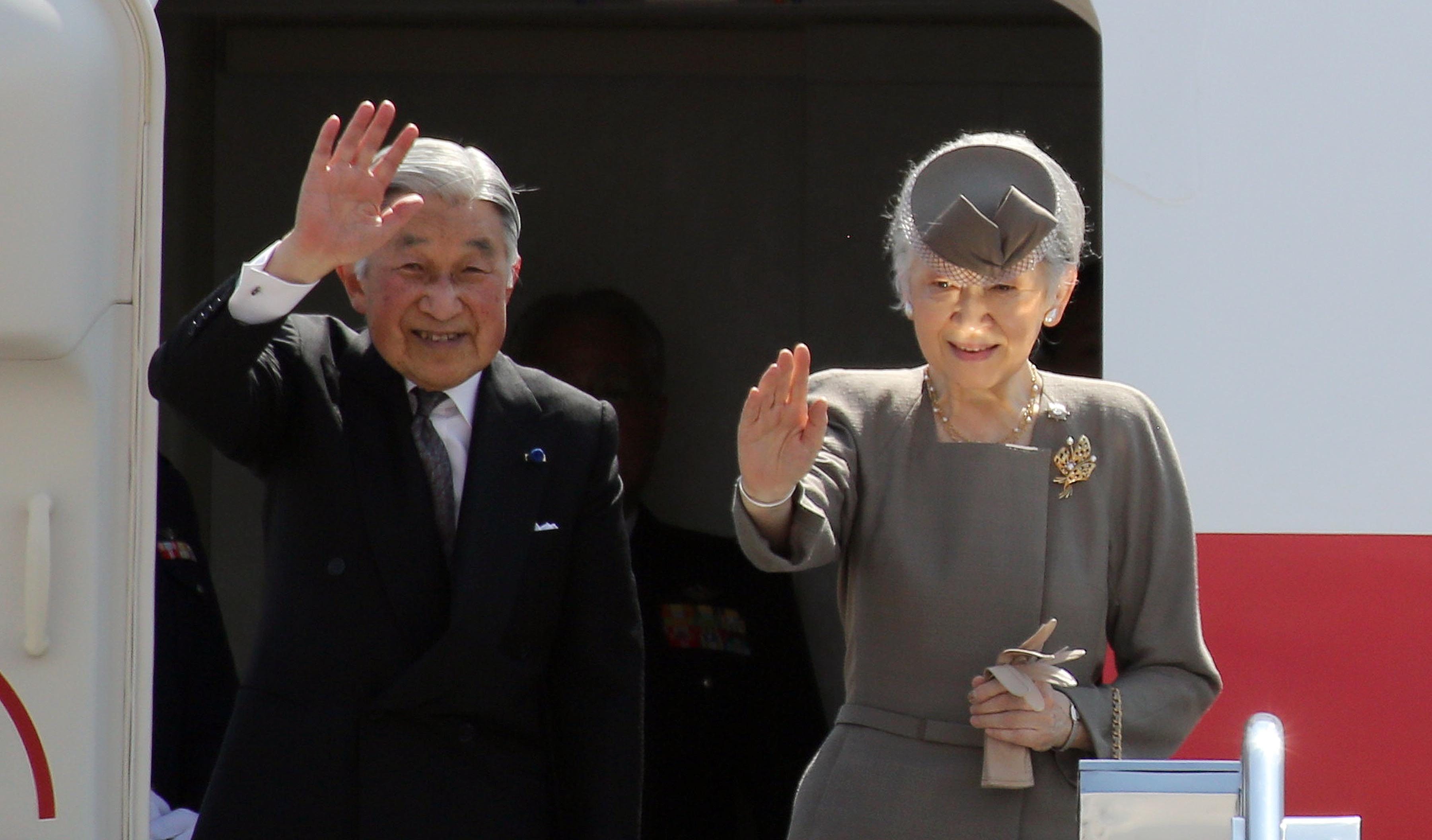
– Rappler.com
Add a comment
How does this make you feel?

![[Hindi ito Marites] Japan: From enemy to bestie](https://www.rappler.com/tachyon/2024/07/Hindi-ito-Marites-TC-ls-7.jpg?resize=257%2C257&crop=415px%2C0px%2C1080px%2C1080px)
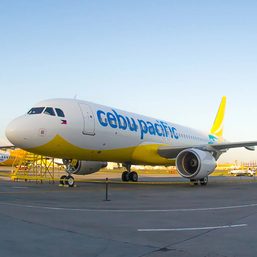

![[Rappler’s Best] America](https://www.rappler.com/tachyon/2024/07/rapplers-best-america.jpg?resize=257%2C257&crop=458px%2C0px%2C1080px%2C1080px)
There are no comments yet. Add your comment to start the conversation.